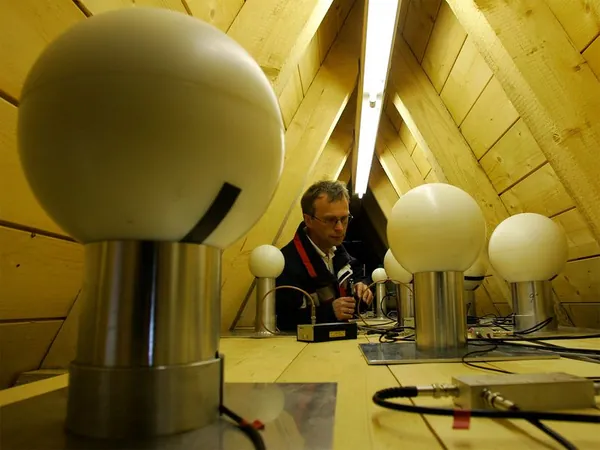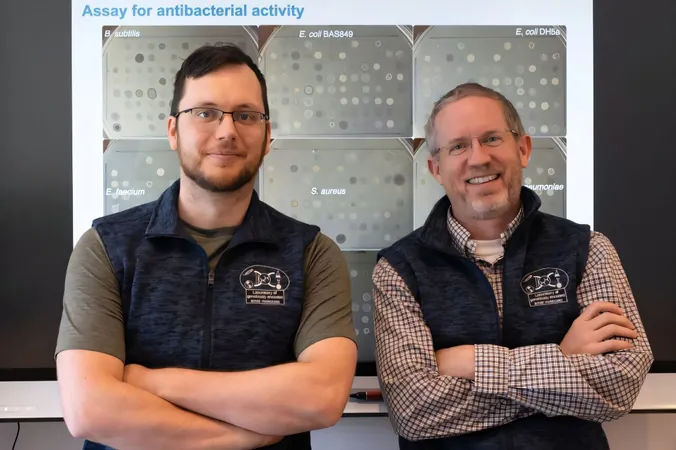
Breakthrough in Quantum Computing: Atoms 'Talk' Inside Silicon Chips!
2025-09-21
Author: Noah
Silicon Chips and Atomic Communication: A Game Changer
In a groundbreaking development, engineers at the University of New South Wales (UNSW) have discovered a method to enable atomic nuclei to communicate inside silicon chips, a leap that paves the way for practical, scalable quantum computers.
Entangled States and Quantum Power
The team achieved a remarkable feat by creating 'quantum entangled states'—where two particles, such as atomic nuclei, become so interconnected that their behaviors become intrinsically linked. This entanglement is a crucial feature that gives quantum computers their superior capabilities compared to traditional computing.
A Step Toward the Quantum Future
Published in the prestigious journal Science on September 18, this research marks a significant milestone in the quest for large-scale quantum computing, one of the most thrilling scientific challenges of our time. Dr. Holly Stemp, the study's lead author, emphasized the potential for developing future microchips for quantum applications using existing manufacturing processes.
The Perfect Balance: Interaction Meets Isolation
One of the great challenges in quantum engineering has been to effectively balance isolation from external noise while still allowing necessary interactions for computation. This fine-tuning is crucial as engineers race to deliver the first truly operational quantum computer.
The Secrets of Nuclear Spin
The UNSW team harnessed the nuclear spin of phosphorus atoms embedded within silicon chips to encode quantum information. Scientia Professor Andrea Morello described nuclear spin as the cleanest quantum object available, despite the challenges of connecting multiple nuclei in a scalable manner.
From Soundproof Rooms to Global Communication
Dr. Stemp illustrated the previous limitations of nuclear communication with a metaphor: "Nuclei were like individuals in a soundproof room, able to converse clearly but isolated from the outside. Now, with our advancement, it's as if we’ve given them telephones—enabling communication across distances previously thought impossible."
Subatomic Interactions Made Easy
By allowing electrons to mediate communication between atomic nuclei over distances of about 20 nanometers—akin to having the separation between Sydney and Boston if scaled up to human sizes—the researchers have overcome one of the largest hurdles facing quantum silicon technology.
Compatibility with Modern Technology
Despite the novelty of their experiments, the researchers assure that their innovations seamlessly integrate with current silicon chip technology. Collaborating with experts from the University of Melbourne and Keio University in Japan, they introduced phosphorus atoms into ultra-pure silicon slabs, blending cutting-edge research with existing semiconductor manufacturing processes.
A New Era of Quantum Computing
This research not only aligns with the future of quantum computing but also showcases the potential of silicon-based technologies in taking quantum systems from experimental labs to practical applications. The race for the first operational quantum computer has just taken a giant leap forward!









 Brasil (PT)
Brasil (PT)
 Canada (EN)
Canada (EN)
 Chile (ES)
Chile (ES)
 Česko (CS)
Česko (CS)
 대한민국 (KO)
대한민국 (KO)
 España (ES)
España (ES)
 France (FR)
France (FR)
 Hong Kong (EN)
Hong Kong (EN)
 Italia (IT)
Italia (IT)
 日本 (JA)
日本 (JA)
 Magyarország (HU)
Magyarország (HU)
 Norge (NO)
Norge (NO)
 Polska (PL)
Polska (PL)
 Schweiz (DE)
Schweiz (DE)
 Singapore (EN)
Singapore (EN)
 Sverige (SV)
Sverige (SV)
 Suomi (FI)
Suomi (FI)
 Türkiye (TR)
Türkiye (TR)
 الإمارات العربية المتحدة (AR)
الإمارات العربية المتحدة (AR)